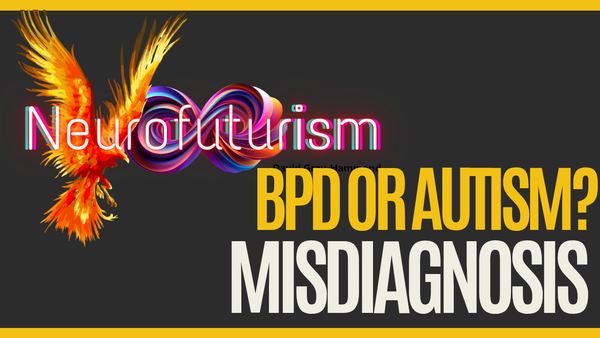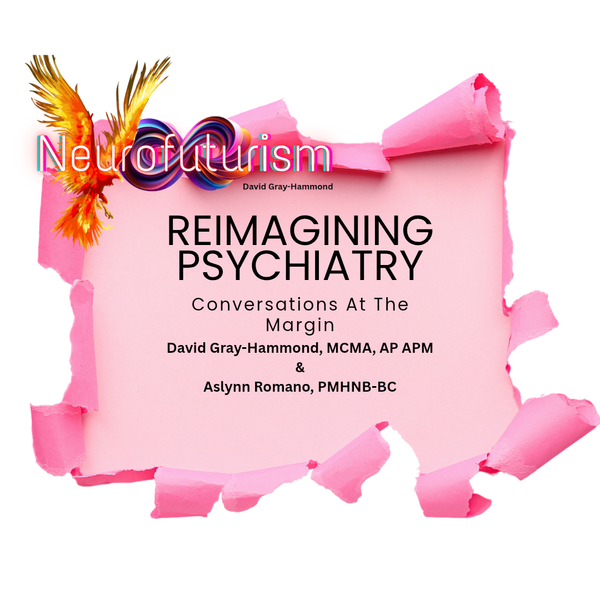CAMHS: The HEARTBREAKING Reality for Autistic Families
Autistic families face significant barriers when seeking support from Child and Adolescent Mental Health Services (CAMHS), with only 10% of patients being Autistic despite 70% of Autistic children experiencing mental health issues. The service lacks accessibility, attentiveness, and understanding of
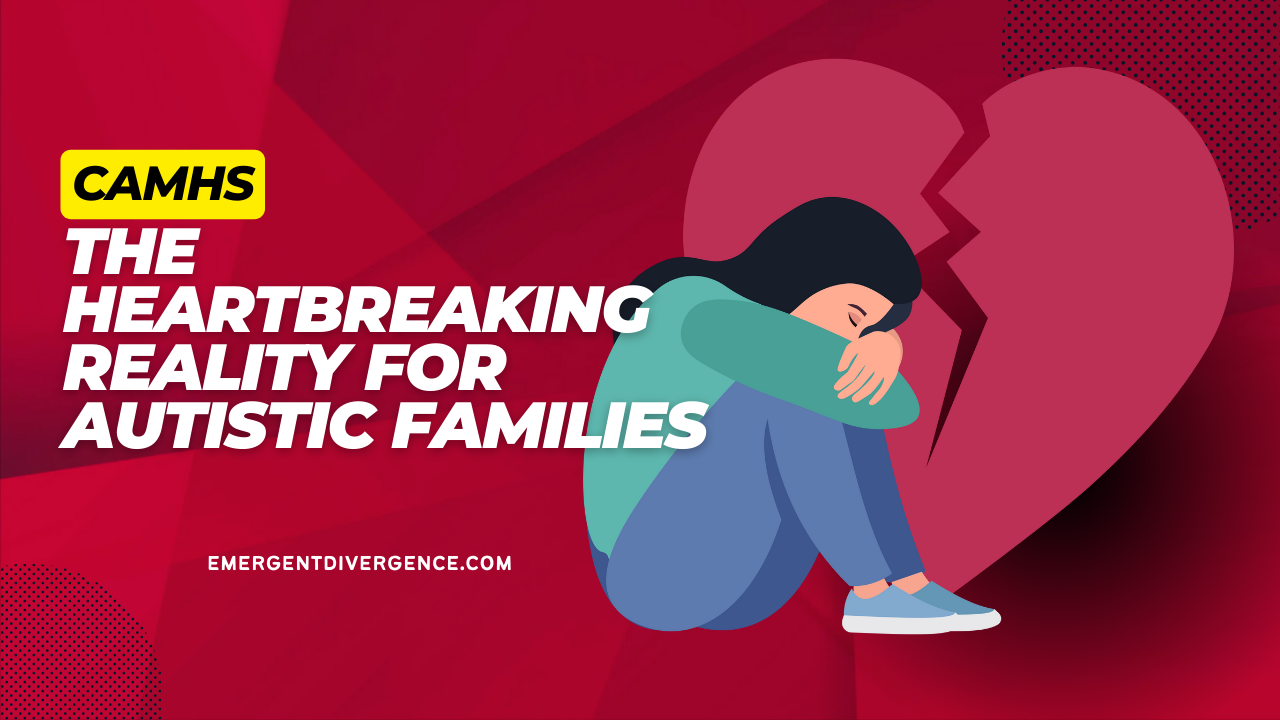
It's no secret that Autistic children tend to have Autistic family members. It's also no secret that while many parents of Autistic children may not know they are neurodivergent, they still face similar barriers to those of us who are privileged enough to have a formal diagnosis. It is, then, a matter of deep concern that Child and Adolescent Mental Health Services (CAMHS) are so very discriminatory towards Autistic people. As a service, they have created a hostile environment that boxes families out of their support. So, what is the reality of being an Autistic family seeking support from CAMHS? Drawing on the quantitative report I recently wrote, we will explore this.
Is CAMHS Accessible?
I asked Autistic families whether they found CAMHS easy and accessible to access. They rated the associated statement from 1 (Strongly Disagree) to 5 (Strongly Agree). It will be unsurprising to you that overwhelmingly, they disagreed that CAMHS was easy to access.
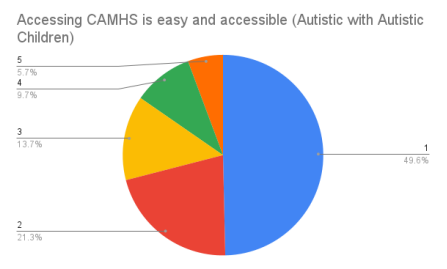
70.9% of those responding in to the survey disagreed that the service was easy and accessible to gain access to. Almost three quarters disagreed. To me this highlights why only 10% of their patients are Autistic when over 70% of Autistic children have a mental health condition (More on this here). This is also reflective of my own experience as a patient some 19 years ago when I personally found the referral process to be long winded and confusing.
Do CAMHS meet the needs of their patients?
To investigate this I once again used a statement of "CAMHS were attentive and supportive of mine or my loved ones needs (or my service user if you are a professional)", it was rated in the same way.
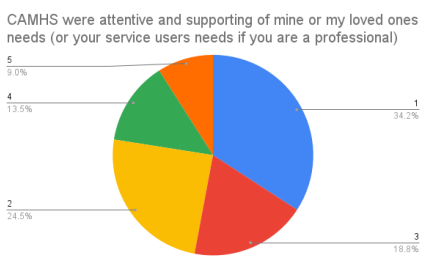
Only 22.5% of Autistic people agreed with this statement. CAMHS are seeing our children at the most vulnerable times of their lives, and yet less then a quarter of people think they are attentive and supportive of our needs. This highlights to me the recent findings of an inquest into the death of Jennifer Chalkley, and Autistic young person whose death has been laid at the feet of CAMHS. The coroner commented that CAMHS lost sight of the important role that they played in Jennifer's wellbeing. This service has become more focused on getting people out the door, or keeping them out altogether, than supporting Autistic people in ways that benefit them.
Dignity and respect in a culture of resource management
CAMHS as a service have lost sight of their purpose. They have become focused on distribution of resources than the patient, and this is highlighted in questions around the dignity and respect of the service user. This was also reflected in the report.
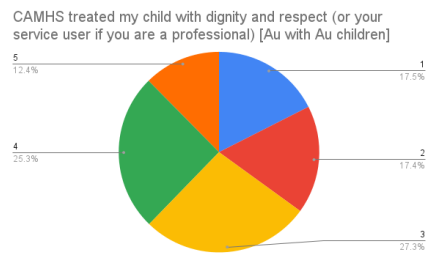
At a glance, it appears that CAMHS are doing better on this measure. 37.7% agreed compared to 34.9% who disagreed. I would state, however, that what we want to see is the vast majority (50%+) strongly agreeing (voting 5) that they treated children with dignity and respect. In reality, only 12.4% of Autistic families strongly feel that services treated their child with dignity and respect. I believe this disparity is a function of the double empathy problem. Non-Autistic staff are not able to empathise with the experience of Autistic children and Autistic families, and as such, they fail to treat them in a way that is interpreted as dignified and respectful.
Further to this is the measure of whether CAMHS understand Autistic experience. A whopping 58.6% disagreed that services understand Autistic experience, which is reflective of the double empathy problem. How can you respect what you don't understand? Only 18% of Autistic people believed that services definitively understood Autistic experiences. This is not enough.
CAMHS don't accommodate Autistic people within their services
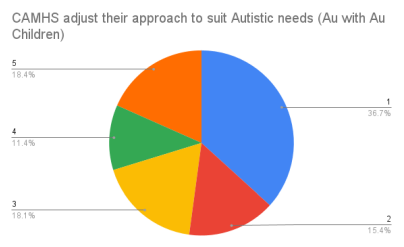
NICE guidelines are clear that services should be adapted for Autistic service users. This means that 100% of people should be strongly agreeing that CAMHS adapt their services to the needs of Autistic patients. In actual fact, only 29.8% gave any kind of agreement to this statement. Almost three quarters of Autistic people believe that services have failed to follow NICE guidelines.
Autistic people are bring failed at every turn
It's clear that Autistic people are being failed in multiple, upsetting ways. Services don't care to adapt themselves for our children, and they do not treat us in a respectful way. It is also a significant issue that accessing services is so confusing and time consuming. What Autistic families need is easy to access support for an issue that they are more likely than the general population to encounter. When 70% of Autistic children experience mental health issues, but rarely get meaningful support, we can not be surprised when this results in negative outcomes and loss of life and wellbeing. CAMHS need to do better.
What can CAMHS do to fix this?
- Services are difficult to access for Autistic people
- The process does not make Autistic families feel dignified or respected
- A lack of understanding of Autistic experience means that services are not tailored to suit Autistic needs
In order to fix this, we need services to be redesigned with inclusive approaches and accessibility in mind. This needs to be done with service user and family involvement, and should be co-produced with the Autistic community. We also need Autistic professionals and service users front and centre training staff on how to understand, work with, and adapt approaches to suit Autistic patients. Until this is done, we are unlikely to see improvement.

